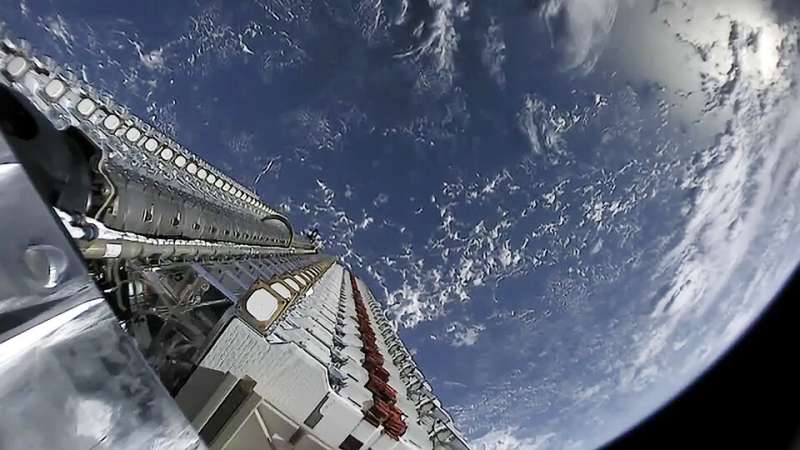Credit: SpaceX, Starlink mission
Two companies, OneWeb and SpaceX, are racing to put fleets of thousands of communication satellites into orbit. In March, they had their first near miss. Avoidance maneuvers were successful, but how many more close calls will they face in the future?
SpaceX has already launched over a thousand of its Starlink global broadband internet satellites, and competitor OneWeb has lofted 146 of its own. Both companies—and several others—are actively prepping for dozens of more launches and thousands of more satellites.
But while space is a big place, orbits are a precious resource, especially with so many satellites already up and so many more planned. near misses are unavoidable, as both companies found out on March 30th, when they received several "red alerts" from the US Space Force's 18th Space Control Squadron, warning of a possible collision.
The red alert came just five days after OneWeb launched 36 satellites from Russia. While the OneWeb constellation orbits at a higher altitude than Starlink, they must pass through those orbits to get to their operational location.
The Space Force alert noted that two satellites would pass within 190 feet of each other—which isn't a lot when both spacecraft are flying at thousands of miles per hour. The probability of collision was calculated to be 1.3%.
SpaceX claims it has an AI-powered automated collision avoidance system onboard its spacecraft, but the company strangely shut down its system and allowed OneWeb to alter the course of its satellite instead. SpaceX did not provide public commentary on the event.
The near miss has renewed calls for more transparency, accountability and coordination of orbital activities. There is no law or authority that forces companies or agencies to move their satellites in the case of a potential collision—just a desire not to wreck perfectly good hardware and contribute to the spread of pernicious space junk.
Still, no satellites were harmed in the event, which is a good thing.
"This event was a good example of how satellite operators can be responsible given the constraints of global best practices," says Diana McKissock, the head of the Space Force 18th Space Control Squadron's data sharing and spaceflight safety wing. "They shared their data with each other, they got in contact with each other, and I think in absence of any global regulation, that's… the art of the possible."
Provided by Universe Today





















